The Future of Remote Work: How Technology Is Redefining the Workplace

Introduction
The rise of remote work has transformed the employment landscape, particularly in the wake of the COVID-19 pandemic. What began as a temporary solution to health concerns has evolved into a lasting shift in how organizations operate and employees perform their roles. With technology enabling seamless communication and collaboration from virtually anywhere, remote work has become a viable and, for many, a preferred option. As companies adapt to this new paradigm, the way jobs are structured, executed, and evaluated is undergoing significant change.
Understanding the implications of this shift is crucial for both employers and employees. As traditional office spaces evolve or, in some cases, become obsolete, job dynamics are being reshaped in ways that can enhance flexibility, productivity, and work-life balance. However, this transformation also poses challenges, such as maintaining company culture and ensuring equitable access to opportunities.
In this article, we will explore several key topics that highlight the future of remote work: the technological innovations driving this shift, the evolving skill sets required in a digital workplace, the impact on company culture, and the potential for increased global talent access. By examining these areas, we can gain insight into how remote work is not just a temporary trend but a fundamental change in the world of employment.
Historical Context
A. The Evolution of Work Pre-Remote Era
Before the rise of remote work, traditional office settings dominated the employment landscape. Most jobs were performed within the confines of physical office spaces, where employees adhered to a structured 9-to-5 schedule. This environment fostered a culture of face-to-face interactions, hierarchy, and often, a rigid adherence to established routines. While this model provided some benefits, such as immediate collaboration and a clear separation between work and personal life, it also limited flexibility and accessibility for many workers.
B. The Shift During the Pandemic
The onset of the COVID-19 pandemic in early 2020 catalyzed a rapid and unprecedented transition to remote work. Businesses were forced to adapt almost overnight, grappling with logistical challenges and technological barriers. Many organizations had to quickly implement digital communication tools and cloud-based solutions, often without prior experience. This abrupt shift exposed significant gaps in infrastructure and preparedness but also highlighted the potential for increased productivity and work-life integration. As employees adjusted to remote work, both companies and workers began to rethink what a productive work environment could look like.
Current Trends in Remote Work
A. Hybrid Work Models
Hybrid work models are becoming increasingly popular as organizations seek to combine the benefits of remote work with the advantages of in-office collaboration. These arrangements typically involve employees splitting their time between remote work and attending the office on designated days. For instance, some companies allow teams to work remotely three days a week, reserving in-office days for meetings and collaborative tasks. This flexible approach not only accommodates various work styles but also fosters a sense of community and team cohesion.
The benefits of hybrid models are manifold. Employees enjoy greater flexibility, allowing them to manage personal commitments while still meeting professional obligations. Employers, on the other hand, can reduce overhead costs related to office space while attracting a wider talent pool by offering more adaptable work arrangements.
B. Increased Flexibility and Autonomy
Remote work has significantly enhanced employees' ability to balance their professional and personal lives. With the elimination of daily commutes and the ability to design their own work environments, many individuals report increased job satisfaction and productivity. Companies like Slack and GitLab have implemented flexible schedules, empowering employees to choose their working hours based on their personal peak performance times. This autonomy not only boosts morale but also enhances engagement, as employees feel trusted to manage their time effectively.
C. Technological Advancements
The rise of remote work has been propelled by numerous technological advancements that facilitate seamless collaboration. Tools like Zoom and Slack have become staples for communication and project management, enabling teams to connect in real time, regardless of their locations. Additionally, the integration of AI and automation is transforming remote work processes. AI-driven platforms can streamline tasks such as scheduling meetings or managing workflows, allowing employees to focus on more strategic activities. As technology continues to evolve, it promises to further enhance the remote work experience, making it even more efficient and productive.
Impact on Job Roles and Industries
A. Changes in Job Descriptions and Requirements
The shift to remote work has led to significant changes in job descriptions and requirements across various industries. Employers are increasingly seeking candidates with strong digital communication skills, as remote collaboration relies heavily on tools like video conferencing and instant messaging. Additionally, time management has become a critical competency; individuals must effectively organize their schedules and maintain productivity without the direct oversight of a manager. As a result, roles that previously emphasized in-person interactions are now evolving to prioritize adaptability and self-motivation.
B. Growth of Remote-First Companies
The rise of remote work has given birth to a new breed of organizations known as remote-first companies. These businesses operate entirely without physical office spaces, allowing employees to work from anywhere in the world. Examples such as GitLab and Buffer have not only embraced this model but have also thrived as a result. Their success stories highlight the potential for increased productivity and employee satisfaction, as well as the ability to tap into a global talent pool without geographical constraints. This model is proving to be an attractive alternative for both startups and established companies looking to innovate.
C. Industries Embracing Remote Work
While remote work is becoming prevalent across numerous sectors, some industries have adapted more readily than others. The technology sector, in particular, has been at the forefront of this shift, leveraging digital tools to facilitate collaboration. Marketing and customer service have also embraced remote work, with many teams successfully managing campaigns and client interactions from diverse locations. As these industries continue to evolve, the emphasis on remote work is likely to inspire further changes in workplace culture and job dynamics across the board.
Challenges of Remote Work
A. Isolation and Mental Health Concerns
While remote work offers flexibility and autonomy, it can also lead to feelings of isolation and mental health challenges. Many employees miss the social interactions that come with a traditional office environment, which can contribute to loneliness and disengagement. The lack of casual conversations and team bonding activities may lead to decreased morale and increased stress. Organizations need to recognize these concerns and implement strategies, such as virtual team-building activities and regular check-ins, to foster a sense of community and support employee well-being.
B. Managing Productivity and Accountability
Maintaining productivity and accountability in a remote setting can be challenging for both employees and managers. Without the structure of an office, some workers may struggle with distractions at home, while others may find it difficult to stay motivated. To combat these issues, organizations can adopt strategies such as setting clear expectations, utilizing productivity tools, and encouraging regular goal-setting. Establishing a results-oriented culture, where employees are evaluated based on their output rather than hours worked, can also promote accountability and enhance performance.
C. Communication Barriers
Remote communication can present several challenges, including misunderstandings and information silos. Without the benefit of non-verbal cues, messages may be misinterpreted, leading to confusion and frustration. To overcome these barriers, teams can utilize a combination of communication tools, such as video calls for complex discussions and instant messaging for quick updates. Additionally, fostering a culture of open communication, where team members feel comfortable asking for clarification or voicing concerns, can enhance collaboration and minimize potential conflicts.

The Future Outlook
A. Predictions for Remote Work Trends in the Next 5-10 Years
As we look ahead, industry experts predict that remote work will continue to evolve, becoming an integral part of the job landscape. The hybrid model is expected to gain further traction, with more organizations adopting flexible arrangements that balance remote and in-office work. Additionally, advancements in technology, such as virtual reality and augmented reality, may reshape how teams collaborate, making remote interactions more immersive and engaging. The demand for remote roles is likely to increase, with companies prioritizing talent from diverse geographical locations, further democratizing job opportunities.
B. Potential Regulatory Changes
As remote work becomes more mainstream, regulatory frameworks are anticipated to evolve to accommodate this shift. Discussions around labor laws will likely focus on issues such as remote workers' rights, taxation, and benefits. Governments may implement policies to ensure fair treatment of remote employees, addressing concerns related to work hours, overtime, and health and safety. Employers will need to stay informed about these changes and adapt their policies to remain compliant and supportive of their workforce.
C. Preparing for the Future
To navigate the ongoing changes in work dynamics, both employees and employers should proactively prepare. Employees can enhance their skill sets by focusing on digital communication, time management, and adaptability—skills that will be increasingly valuable in remote environments. Employers, on the other hand, should invest in training programs that foster remote work competencies and create supportive policies that prioritize employee well-being. By embracing a culture of flexibility and continuous learning, organizations can thrive in the evolving landscape of remote work.
Conclusion
In this article, we explored the significant transformations in the workforce driven by the rise of remote work. We examined the historical context leading to this shift, the current trends shaping job dynamics, and the impact on various roles and industries. We also addressed the challenges that come with remote work, such as isolation and communication barriers, while discussing strategies for overcoming these obstacles.
Looking ahead, the future of work appears promising, with predictions pointing toward a continued embrace of hybrid models and technological advancements that enhance collaboration. As regulatory frameworks evolve to support remote workers, both employees and employers must adapt to these changes. By fostering a culture of flexibility, investing in skill development, and prioritizing well-being, organizations can unlock the full potential of remote work.
Ultimately, embracing the future of work offers significant benefits, including increased job satisfaction, access to a diverse talent pool, and enhanced productivity. As we navigate this new landscape, it is crucial for all stakeholders to remain open to innovation and collaboration, ensuring a thriving work environment for years to come.
Call to Action
We want to hear from you! Share your own experiences with remote work—what have been your challenges, successes, and lessons learned? Your insights could help others navigate their own remote work journeys.
Additionally, we invite you to join the discussion on what you envision for the future of your job in this increasingly digital world. How do you see remote work evolving in your industry, and what changes do you anticipate in the way we collaborate? Together, let’s explore the possibilities and shape the future of work!
Related Article Navigating the IT Job Market as a Recent Graduate Top 10 Certifications for Advancing Your Career in Data Science How to Craft a Perfect Cover Letter for IT Jobs Balancing Act: How to Job Search Effectively While Working Full-Time Open Source Contributions: How to Get Started Leadership Styles: How Different Approaches Impact Team Dynamics and Success From Any Field to Data Science: Your Ultimate Career Switch Blueprint How to Get a Data Science Job as a Fresher Personal Branding in the Digital Age: Building a Compelling Online Presence for Job Search Success How to Build a Strong GitHub Portfolio for IT Jobs The Future of Remote Work: How Technology Is Redefining the Workplace The Future of Artificial Intelligence in Programming
